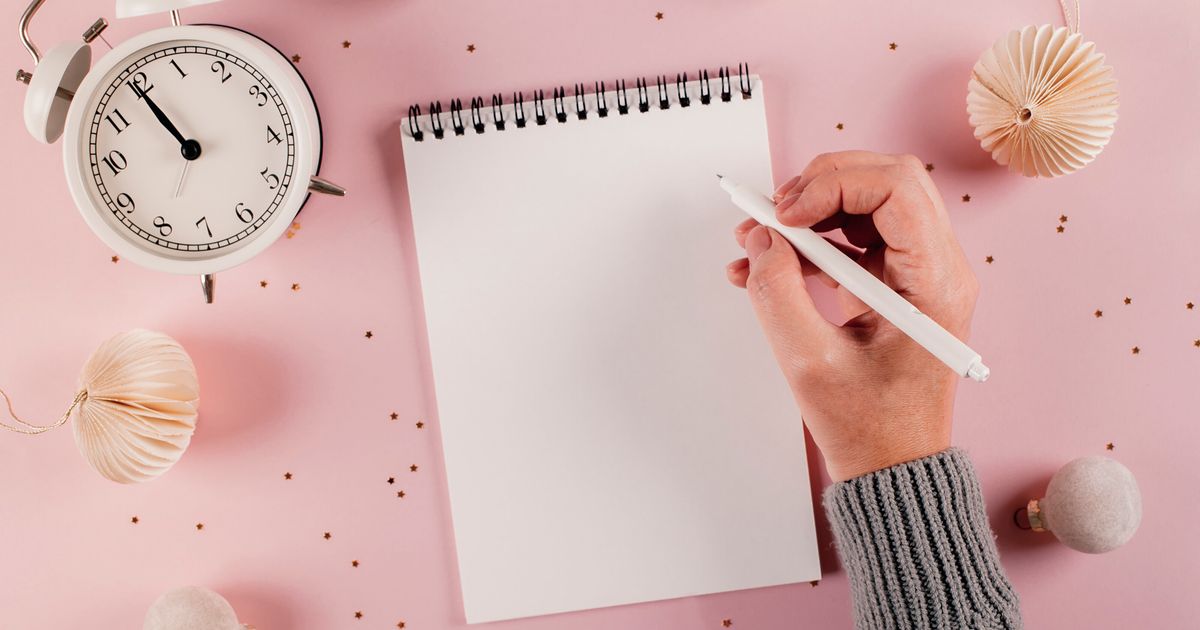
It’s the same every year – we make a list of resolutions for the New Year the length of our arm, before inevitable breaking them half way through January.
The fact of the matter is, trying to implement so many changes into our lives at once is no easy feat.
Advertisement
Change can be tricky, especially if it involves breaking a habit of a lifetime and requires a whole lot of discipline. However, there is a method that could make us stick to our self-promises for good.
Enter ‘habit stacking’.
The concept is fairly straightforward, as TikToker Elle Leonard explains in her now viral video, habit stacking involves ‘stacking’ a habit you want to do on top of one you already have, meaning it’s more likely to become part of your daily routine.
In her video, Elle uses the example of wanting to speak to her grandparents more. In her home she has mugs that her grandmother gave her and now, whenever she uses one, she uses it as a reminder to phone her relatives there and then to check in.
Advertisement
By incorporating her daily habit of having a morning coffee with a new habit of speaking to her grandparents, she’s managed to stick to it.
And it’s not just TikTok that loves habit stacking, the pros do too.
According to James Clear, author of #1 New York Times bestseller Atomic Habits, “your brain builds a strong network of neurons to support your current behaviours. The more you do something, the stronger and more efficient the connection becomes.”
He defines the formula for habit stacking as: After/Before current habit, I will new habit.
Habit stacking, explains Clear, lets you take advantage of the strong connections you have for a habit you already carry out in order to stick to a new one.
“You have patterns and behaviours that have been strengthened over years. By linking your new habits to a cycle that is already built into your brain, you make it more likely that you’ll stick to the new behaviour,” he writes on his website.
By stacking your habits, effort is less, the new parts of your routine are more natural, and voila! You’re on the road to long-lasting behavioural change.
Advertisement
Another key way of making sure that habit stacking is successful, is clearly setting a highly specific and actionable cue on which to attach your new habit to.
For instance, let’s take ‘eating more healthily’ as a resolution we want to stick to in 2023. According to Clear, this isn’t, well, clear enough.
Instead, to make it actionable, you’d stack it onto something you already do, for instance: “When I cook dinner for myself at night, I will cook a portion of vegetables every single time.”
Or how about, “when I wake up, while I’m waiting for/making my coffee, I will eat a piece of fruit.”
This is far less vague than ‘eat healthier’ as it’s a habit you can incorporate into the one you already carry out.
Advertisement
Here’s another example that many of us will no doubt be promising ourselves in 2023: drinking more water.
Instead of just vowing to do that, we can build it into our routines on top of an action we already carry out – “after I brush my teeth, I will drink a glass of water”, “before I eat my lunch, I will drink a glass of water”, “when I close my laptop for the day, I will drink a glass of water.”
Clear explains: “Be specific and clear: After I close the door. After I brush my teeth. After I sit down at the table. The specificity is important. The more tightly bound your new habit is to a specific cue, the better the odds are that you will notice when the time comes to act.”
Here’s his list of habits you can ‘anchor’ a new one to:
- Get out of bed.
- Take a shower.
- Brush your teeth.
- Get dressed.
- Brew a cup of coffee.
- Eat breakfast.
- Take the kids to school.
- Start the work day.
- Eat lunch.
- End the work day.
- Change out of work clothes.
- Sit down for dinner.
- Turn off the lights.
- Get into bed.
Happy stacking!




